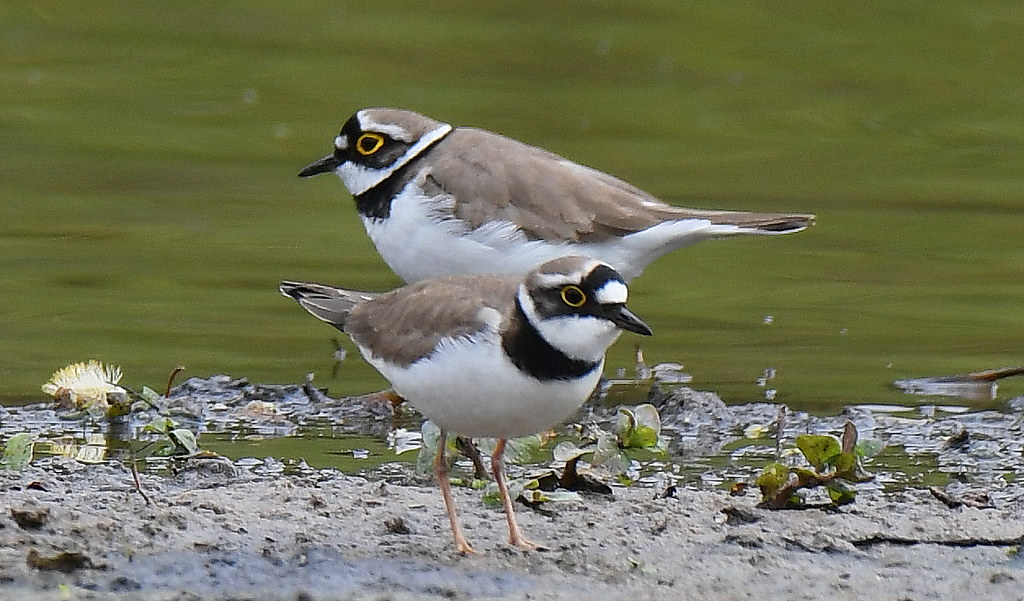This story was originally published by The Guardian and appears here as part of the Climate Desk collaboration.
Affairs or lengthy spells apart commonly spell divorce for human couples — but it seems similar factors play a role in breakups among birds.
It is thought more than 90 per cent of bird species generally have a single mate over at least one breeding season, if not longer. However, some monogamous birds switch to a different partner for a subsequent breeding season despite their original mate remaining alive — a behaviour labelled “divorce.”
While a number of studies have looked at possible factors associated with such breakups, experts say these tend to focus on individual species or groups of species.
Now researchers say they have found two key factors that are involved in divorce across a broad range of bird species: male promiscuity and long-distance migrations.
Writing in the journal Proceedings of the Royal Society B, researchers in China and Germany describe how they drew on previously published data regarding divorce rates for 232 species of birds with mortality data and migration distances. The team also gave males and females of each species a separate “promiscuity score” based on published information about the birds’ behaviour.
They also carried out an analysis based on the evolutionary relationships between species to take into account the effect of common ancestry.
The results reveal that species with notably high divorce rates tended to be closely related to each other, a finding that also held for species with notably low divorce rates. A similar pattern was seen for male promiscuity.
“For instance, plovers, swallows, martins, orioles and blackbirds had both high divorce rates and male promiscuity, whereas petrels, albatrosses, geese and swans had low divorce rates and male promiscuity,” the team write.
While the researchers found higher male promiscuity was associated with higher divorce rates, this was not the case for female promiscuity.
“When a male bird is promiscuous, it is often perceived as a reduction of this commitment, as his attention and resources are divided among several females. This can make him less attractive as a partner, and thus more likely to be ‘divorced’ in the next breeding season. Conversely, a male can augment his fitness by mating with multiple females,” said Dr. Zitan Song, a co-author of the research at the Max Planck Institute of Animal Behavior in Germany. As a result, divorce rates may rise where males have more opportunities to be promiscuous.
However, Song suggested female promiscuity may not lead to the same consequences because uncertainty about an offspring’s paternity could result in increased male involvement in parental care.
The team also found species with longer migration distances had a higher divorce rate.
“After migrating, pairs may arrive at their destination asynchronously, leading to a situation where the early arrival might mate with a different partner, resulting in a divorce. Migration could also lead to pairs landing in different breeding sites, thereby causing divorce due to accidental loss. This effect intensifies with increasing migration distance,” said Song. The team noted longer migrations narrowed the window for breeding.
“Divorce can aid in facilitating immediate breeding upon arrival, rather than waiting for a previous partner,” Song said.
The researchers also found mortality rates and migration distance appeared to be related to male promiscuity, suggesting potential indirect effects on divorce.
The team says the results suggest divorce in birds may not simply be a strategy to boost an individual’s fitness or a response to ecological factors such as migration, but instead could simultaneously be affected by both.
Dr. Samantha Patrick, an expert in marine biology at the University of Liverpool, who was not involved with the research, welcomed the study.
“Perhaps given my own current research interests, I find the results linking migration asynchrony to divorce [most interesting],” she said. “As the climate becomes more unpredictable, migration timings may become more variable and this paper suggests that across species, this could increase divorce rates.”





Comments